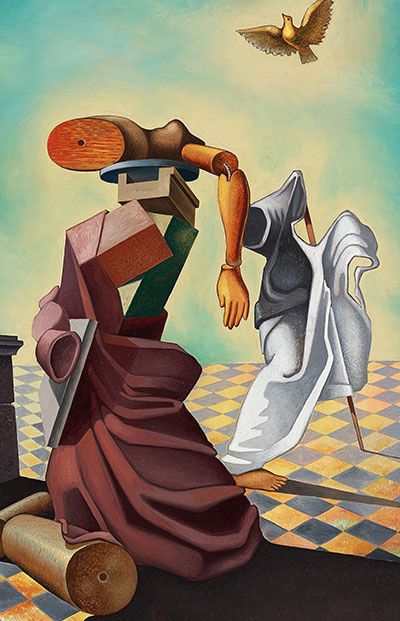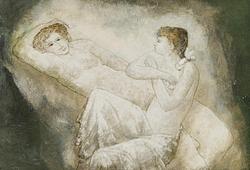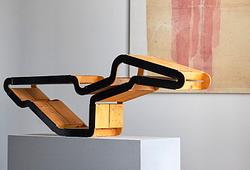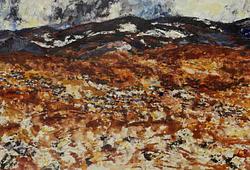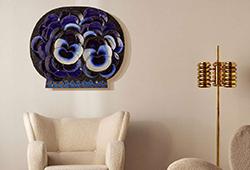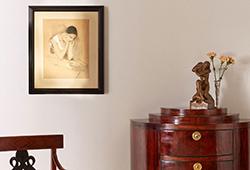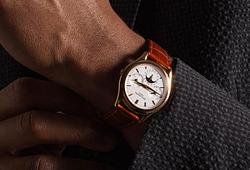A modern highlight – work by Erik Olson
"Komedianter" to be sold at Modern Art + Design
Erik Olson first came to Paris in 1924 together with his cousin Waldemar Lorentzon. He studied at Académie Moderne for some time where he was introduced to the late cubism by his teacher Fernand Léger. Between 1924-25 he traveled around Italy and from there he had to go back to Sweden and Halmstad due to financial troubles. In 1927 he had enough money to return to Paris and stayed there until 1935. Back in Paris his artistry developed a lot. In 1930 ha created some of the most important concrete works in Swedish art history. After that he left the concrete idiom and continued to explore and develop his own surrealism together with his colleagues in the artist group called Halmstadgruppen.
"Komedianter" is painted in 1937 when Olson’s surrealism is in full bloom. The work depicts two strict figures made up of geometric elements dressed in sweeping garments. The title and the column fragments make the viewer think of ancient Greece. The colors are bright and the checkered floor seems to be rolled out as a mat from the cylinder shapes in the lower corner of the picture. It helps to give the image a strong sense of unreality, so typical of Olson's art in the 1930s. Within the Halmstad group they wanted to combine realism with surrealism and not completely break the connection with the experienced world. In "Komedianter", the blue sky and white dove can be seen as examples of this quest to combine realism with surrealism.
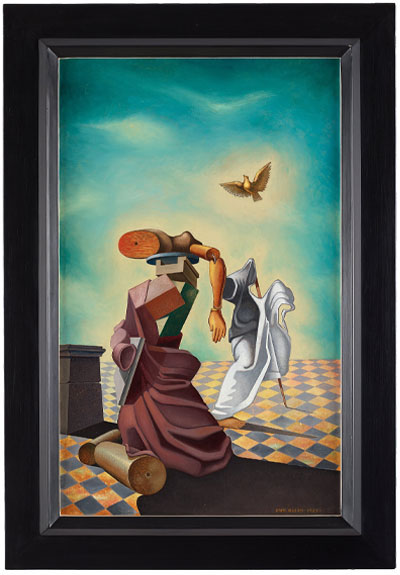
The artwork is for sale on 16 June at Modern Art + Design and on view 11–15 June at Berzelii Park 1 in Stockholm, Sweden.
Consign modern art
Bukowskis experience an increased demand for Fine art and design. Bukowskis has a well-established international network of contacts and recurring trust in selling significant art, design, works of art as well as entire collections. Through printed catalogues and extensive marketing, we reach collectors both in Sweden and internationally. We will sell your art and design for the highest prices on the market. Please feel welcome to contact our specialists for any advice or consignment.
